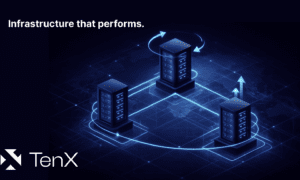2025 has already been a breakout year for token creation in Web3, largely thanks to the rise of platforms that allow people to create tokens without writing a single line of code. Meme coins, creator-led assets, loyalty tokens and DAO economies — the “mint-first, build-later” model has spread fast, generating billions of new market value and making onchain token issuance among the fastest-growing sectors of decentralized finance (DeFi).
Most token creation tools still suffer from the same architectural limitation: tokens are launched in isolated chains without native path to cross-chain liquidity or expansion, despite the increase in their demand ability to tokenize value. A token deployed on Solana stays on Solana. An ERC-20 must be redeployed or bridged to another blockchain to leave Ethereum. Because of this, many of the tokens created with using no-code platforms gets locked in single-ecosystem silos without any innate scaling functionality.
That’s the problem XSwap is now aiming to solve by not reinventing token creation, but by redefining what happens after a token is created.
A Turning Point for Token Launch Infrastructure
On November 3rd at SmartCon 2025, XSwap introduced the Token Creation Platform (TCP) a no-code deployer that not only lets anyone create tokens in seconds, but does so using infrastructure designed for immediate, secure interoperability across chains.
The platform is built on Base, Coinbase’s Ethereum Layer-2 network, and is powered by Chainlink’s Cross-Chain Interoperability Protocol (CCIP), the same technology being adopted by banks, asset managers, and top DeFi protocols to move assets securely across blockchain environments. This gives TCP a dual advantage over traditional token launchers:
- Tokens are deployed automatically on a scalable, low-cost network (Base)
- Every token created can expand to other chains instantly via Chainlink CCIP
In other words, the model of XSwap leaves behind the old single-chain launch pattern and introduces a “build once, launch everywhere” framework. A token made with TCP would not be confined to a single network, it would be created with cross-chain mobility built in.
The company’s CEO, CJ, framed it this way during the SmartCon release:
“We wanted to make token creation feel like opening a workspace, not deploying infrastructure. With TCP, builders can launch and connect their tokens in minutes without thinking about the technical details.”
That simplicity is backed by serious engineering. Chainlink CCIP creates a secure messaging layer that enables the seamless transfer of token data and liquidity across chains, completely eliminating the need for bridges, custodial wrappers, or redeployment scripts. Institutions, such as Swift, Fidelity International, and Euroclear, use the same system to generate compliant, interconnected tokenised assets.
Until now, token tools with fast deploy times couldn’t offer that level of interoperability. XSwap merges both into a single interface.
A Builder-Centric System: Creation, Mobility, and Incentive Alignment
People often forget about what happens after pressing the deploy button on a token-creation platform. Most tools will let you deploy your launch but then leave liquidity, exchange access and onchain traction up to the creator. XSwap takes a different approach.
Every token launched through TCP plugs into XSwap’s own liquidity, leveraging the native XSWAP token to help bootstrap trading depth from day one. This means that creators don’t need to add liquidity manually or negotiate for exchange listing support.
Even more interestingly, XSwap has a Builder Rewards Model created to align platform incentives with actual projects. 0.6% of trading on every token will go to the original creator. Any project that reaches “graduated” status (based on traction and activity tests) is eligible for a $1,000 builder grant. This makes it easier to think of token deployment as participatory rather than transactional, encouraging long-term building rather than speculative mints.
The platform doesn’t assume all builders are engineers, either. The no-code interface enables:
- Token configuration (name, symbol, supply, decimals, controls)
- One-click deployment
- Automatic CCIP interoperability
- Immediate liquidity access
For independent developers, brands and Web2 organizations coming into Web3, it removes a barrier to entry. When it comes to seasoned engineers, it frees up hours of wrapping and deploying repetitive work.
What This Means for the Future of Token Launching
Over the past year, token creation platforms have produced some of the most viral onchain moments in crypto, but they’ve also exposed the limits of single-chain growth. A token may gain traction on its native chain, but the pain begins when users want to trade or interact across other ecosystems.
Cross-chain capability has long been treated as a roadmap feature. XSwap turns it into a default property. That shift matters because Web3 is no longer driven solely by native DeFi users. The next wave of adoption will come from:
- Individuals and communities wanting branded onchain assets
- Apps and games that build token-based economies
- Traditional platforms integrating blockchain into loyalty, social, or identity layers
These builders need tools that abstract away complexity without sacrificing interoperability, especially as Layer-2s, appchains, and modular ecosystems expand. With TCP, XSwap positions itself not just as another token creation platform. Still, as the infrastructure for a unified token economy, one where deploying a token on one chain does not mean choosing only that chain.
The debut of TCP marks a shift in how no-code Web3 tools are designed. The first generation made token creation easy. The second is making token mobility automatic.



































